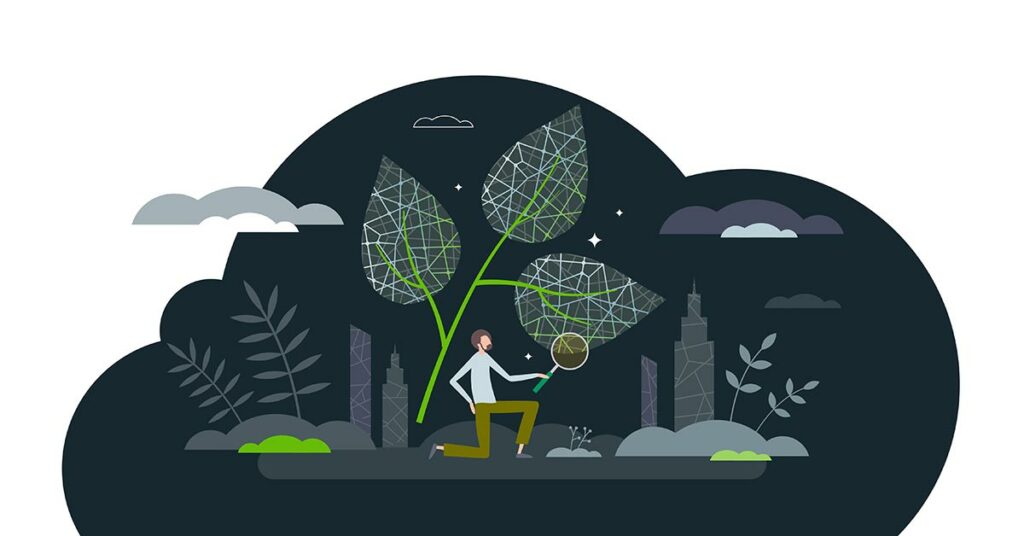As someone deeply involved in the Climate Tech space and a passionate advocate for sustainable solutions, I’ve always been fascinated by the concept of biomimicry. Today, I want to explore how this innovative approach is transforming our efforts to tackle environmental challenges by mimicking the efficient ways nature solves problems.
What is Biomimicry?
Biomimicry is the design and production of materials, structures, and systems that are modeled on biological entities and processes. It’s about learning from nature, which has had billions of years to perfect its methods and designs. The core idea is simple: nature, imaginative by necessity, has already solved many of the problems we are grappling with. Animals, plants, and microbes are the consummate engineers of the world. They have found what works, what is appropriate, and most importantly, what lasts here on Earth.
Why Biomimicry in Climate Tech?
The climate crisis requires innovative solutions, and who better to turn to for inspiration than Mother Nature herself? In my work, I’ve seen firsthand how biomimicry not only promotes sustainability but also leads to more effective technologies. By emulating nature’s time-tested patterns and strategies, we can develop technologies that are more efficient and less harmful to our planet.
Examples of Biomimicry in Action
Energy Efficiency from Humpback Whales
One of the most fascinating examples of biomimicry in climate technology is inspired by the humpback whale. These giants of the ocean have bumps on their fins called tubercles, which improve their hydrodynamics. Engineers have applied this same principle to design wind turbine blades with similar bumps, significantly increasing their efficiency. This design allows the turbines to capture more wind energy without needing to increase their size, a crucial advancement for sustainable energy.
Water Collection from Desert Beetles
Another example comes from the Namib desert beetle. This beetle has a unique shell that allows it to collect water from morning fogs, channeling it into its mouth. Scientists and engineers have mimicked this system to develop surfaces that can harvest water from the air—a potential game-changer for arid regions where water is scarce but humidity is available.
Cooling Systems Inspired by Termites
Perhaps one of the most striking examples is the Eastgate Building in Zimbabwe, which uses a cooling system inspired by termite mounds. These mounds have a natural ventilation system that keeps the interior cool in the hot African climate. The Eastgate Building mimics this system to regulate its temperature naturally, reducing the building’s energy consumption for air conditioning by over 90%. This not only shows the potential for biomimicry in large-scale architecture but also highlights how traditional HVAC systems can be reimagined towards greater sustainability.
The Benefits of Biomimicry
The advantages of applying biomimicry in climate tech solutions are extensive. For one, it allows us to create systems that are inherently sustainable and efficient. These solutions often require less energy, produce less waste, and utilize materials that are more benign to the environment. They also encourage us to think differently about innovation, pushing the boundaries of what is possible by stepping outside the human-centered approach to problem-solving.
Challenges and Considerations
While the potential of biomimicry is vast, there are challenges. One significant hurdle is the complexity of translating biological processes into viable technical applications that can be produced at scale. Furthermore, there is a need for interdisciplinary collaboration as engineers, biologists, designers, and many others must work together to understand and apply these biological insights effectively.
Moving Forward with Nature as Our Guide
Looking ahead, the role of biomimicry in developing new climate technologies is only set to grow. As we face increasing environmental challenges, the need for innovative and sustainable solutions becomes more pressing. Nature, with its 3.8 billion years of research and development, offers a blueprint for success that we cannot afford to ignore.
In my own journey in the Climate Tech field, I’ve been continually inspired by the elegance and efficiency of nature’s solutions. It’s a reminder that sometimes, the answers we seek are fluttering in the wings of a butterfly or hidden in the structure of a coral reef. As we continue to explore and apply these lessons, I am hopeful for a future where our technology not only solves human problems but also contributes positively to the ecological balance of our planet.
Embracing biomimicry could well be the key to unlocking a sustainable future, and I am excited to be part of this journey. Let’s keep pushing the boundaries of what’s possible by looking to nature for inspiration, sustainability, and innovation. After all, in the wise words often attributed to Albert Einstein, “Look deep into nature, and then you will understand everything better.”
